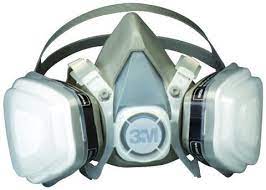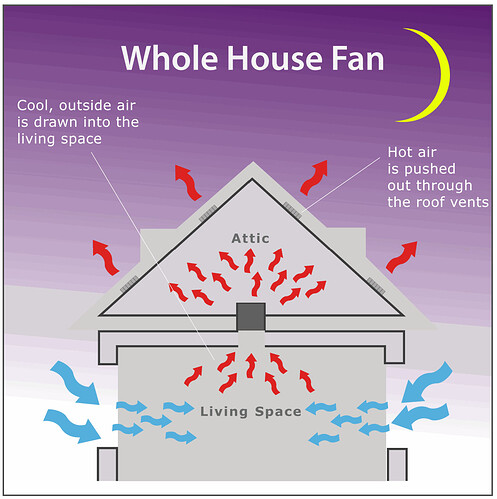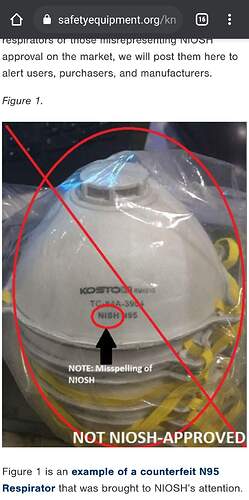I have only every sprayed acrylics, for that I use a 3M organic vapour and particulate respirator. I’m planning to spray lacquers for the first time soon (AK real color). I don’t have access to a proper paint booth and won’t for a few months. Am I safe to spray lacquers in the basement with this respirator and a window open with a fan directing fumes outside?
Filters rated for organic vapors is also what you need for lacquers. A P95 or P100 particulate filter snapped onto the outside of the organic vapors filter (the round, flat pink ones that 3M sells) will help the organic filters last longer by keeping the dried aerosolized paint droplets from clogging them up so quickly.
(The P100’s can also be used alone on the mask. This is all that’s needed for WATER SOLUBLE acrylics. Cellulose based acrylics, like Tamiya need the organic vapor filters too.)
Pay attention to the opened shelf-life on the organic filters. They are only good for a certain period of time after they’ve been taken out of their sealed package. They will absorb contaminates from the ambient air, and eventually become unserviceable.
I try to extend the life of my 3M organic filters by storing them in a closed ZipLoc bag in between long breaks when I’m not airbrushing. However, this is not a 3M approved practice, so you have to be your own judge about its efficacy.
Fortunately, the filters are relatively inexpensive, so I keep a spare set and swap them whenever I have any doubts. I’ll buy another spare set the next trip the “big box” home center.
Final note, if you can smell anything with your mask on, then something’s not right - the fit, the filters, something. If you smell it, you’re breathing it.
This would be the standard for your ventilation question. In your basement, with the window open and a fan running, can you smell anything? If you can, then something’s not working well enough. FWIW, I’ve used my mask with this same filter setup in my large shop spraying POR15, which is REALLY NASTY stuff, and in all the fumes and clouds I can’t smell anything at all.
Perfect, thanks. I cant smell anything with my current filters on. So I am guessing I am good to go in my basement with my respirator on, window cracked and fan blowing air outside? My wife doesn’t come down to the basement much so if I give it say an hour to air out after I should be good? I hope to get a proper spray booth soon but I am moving early in the new year and trying to limit what I have to haul with me
Those paints act pretty much the same as Tamiya,no heavy odor and very easy to learn
Good to know! They look nice and have some really nice colors
It’s not ideal but as long as the wife doesn’t mind the smells then for a short time it shouldn’t be to bad. Once you have your booth make sure you have a good exhaust fan on it. Make sure your fan has a high CFM rate and limit your spraying time so your not doing more than your fans can handle.
Al Patterson
CP136
Umiujaq, Qc J0M 1Y0
I an curious, for spraying paint and varnishes (acrylics) I am using a (not so) cheap Chinese mask with filters similar to 3m.
I think the mask works because I feel zero smells while spraying and as soon as I remove it I get literally assaulted by the smells.
Am I ruining my health?
@Mead93, as @SdAufKla Mike said. He covered that very well so I will hit this from a different angle.
If the basement has other windows, I’d open them as well to help clear out fumes. Before my current paint booth with fan set up I used several other methods safely. There’s always some element of risk with anything but for me, I feel it is manageable with careful precautions.
- The Great Outdoors
I had compressor on cart with ready rack for paints, paper towels, thinner etc. I only airbrushed outside in good weather. Zero issues with fumes. I was building 24 to 28 models at year then, so going outside wasn’t an issue.
However being in my 20’s, I was a bit careless and didn’t use gloves.Got a bit of Dio-sol, a very nasty solvent (Toluene & Xylol mix etc) exposure on my fingers from cleaning airbrush. It was from many repeated small exposures. In some routine lab work my liver function was elevated. Family doctor chastised me for not using gloves after we figured out the source. My exposure was from skin contact with solvent. Few months later retested and liver function was normal. I was still using Dio-sol and at the same rate but wearing gloves.
Moral of the story, wear gloves when airbrushing or cleaning airbrush with solvents.
- Painting In The House w/Attic Fan aka The Whole House Fan.
This is the bomb! ![]()
![]()
![]()
Look up at ceiling one day and got an idea ![]()
Make the whole model hobby room a big paint booth!!!
Over 6,000 cfm of air flow in one room when it’s the only room with open windows ![]() Sit with back to window and airbrush. The attic fan takes care of the rest
Sit with back to window and airbrush. The attic fan takes care of the rest ![]()
It was the perfect set up. No need for respirators as you couldn’t smell anything but nearly 7,000 cfm of fresh out doors air blasting by ![]() Still had to wear gloves.
Still had to wear gloves.
Note - the wife, girlfriend and pets will bitch if you do this in the middle of January and February like I did. Just crank the heat up to 85 F while the wife’s away get the house hot and paint quickly with the window open and attic fan going. It will show up on the utility bills. If you get caught red-handed ![]() like I did several times get ready for a…hot conversation you will not enjoy.
like I did several times get ready for a…hot conversation you will not enjoy.
- New House no attic fan. Open windows, pusher fan, quality 3M respirator.
Close door to room so the rest of the house doesn’t get fumes.
This the worst of the four set ups I’ve used.
- Quality paint booth & quality 3M respirator
Works very well. If you’re a spot & dot shadow painted like myself and can control your airbrush well you can get away not using a respirator and not smell any fumes. I’ve tested this with my paint booth. However, if you hose stuff down with a steady spray you can over power the fan and smell fumes.
#2 Painting In The House w/Attic Fan aka The Whole House Fan is in my mind without question the best and safest for avoid fumes and particles. When we move to our new forever ![]() home
home ![]() it will have an Attic fan.
it will have an Attic fan.
@Nightgaunt, You’re far braver than I am, wink ![]() I like 3M as they are the home team
I like 3M as they are the home team ![]() However, I’ve been accused of being “paranoid” by other modelers about this sort of safety.
However, I’ve been accused of being “paranoid” by other modelers about this sort of safety.
Your mask & filter set up maybe perfectly safe, just make sure the filter cartridges are approved by lab testing for the task at hand.
I want a NIOSH approved mask. I’m sure the EU and other countries have a similar lab testing standard for respirators & filters.
How Can You Be Sure Your Respirator is Truly NIOSH-Approved?
My reason for being paranoid is there’s a lot of counterfieting of products these days like shown below.
Personally, I leave the contaminated area before removing my mask and close the door behind me. Windows left open for ventilation to clear the fumes. I’m a very hard-core enamel & lacquer paint fan for fifty years and counting.
I use the exact same precautions with all paints I airbrush. I feel the so called safety of acrylic paint is greatly overstated and much overblown gimmick.
I know that my mask is not niosh approved for sure, but I always thought that “if I cannot even smell it then I am probably fine”.
I know that I sprayed Tamiya surface primer outside without mask once and I really felt it, both the smell and the burning nose sensation afterwards.
While wearing this one, I had no consequences whatsoever and didn’t smell it until I removed it (probably it was some particles resting on my face and the external part of the mask itself.
However you guys are making me paranoid, I might just buy some 3m filters and slap them into it, they are fully compatible.
If filters fit the mask I would get some, they are only around $15 I think. The mask with filters was 60$ Canadian on Amazon. Pretty cheap insurance for protecting the lungs in my opinion
I wear one of these whenever spraying lacquer paint. The replaceable filters are specifically listed for organic solvents.

Ditto!


